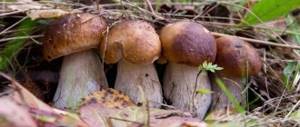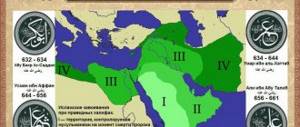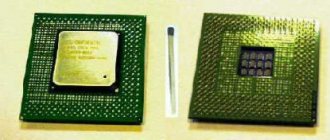Nature concept
Nature is everything that is around us, but not made by man. We can divide all natural objects into two groups: the first belong to living nature, and the second to inanimate nature.
The picture shows objects of living and inanimate nature. Everything that belongs to living nature can grow, breathe and die (examples: fox, tree, boy). Objects of inanimate nature do not possess these qualities (stone, cloud, wind, etc.).
But living and inanimate nature do not exist separately, they are connected with each other. If there were no water and sun, we would not have trees, flowers, vegetables and fruits. The absence of plants would cause the death of herbivores (cows, goats, camels). Therefore, inanimate nature helps living nature to live and exist.
The video presents even more objects of living and inanimate nature.
Summary of the lesson “Nature and Man” on the surrounding world for grade 2
Lesson topic: “Nature and man.” Class 2
Teacher: Sokolova Elena Aleksandrovna
MAOU "Secondary School No. 25 "Olympus" Veliky Novgorod
Lesson objectives:
1. To acquaint students with how humans influence nature and for what purpose the science “Ecology” was created. 2. Teach correct behavior in nature. 3. Foster a love of nature.
Equipment:
1. Projector. 2. Slides. 3. Textbook.
DURING THE CLASSES
1. Updating knowledge.
- Today we have a very important lesson. I want to start it with a poem by R. Rozhdestvensky. It reflects the topic of our lesson.
Slide No. 1
— What anxiety does the author convey in his poem?
—Which book do we call Red?
— What kind of wealth does the poet write about?
- Name the topic of our lesson.
The teacher summarizes: “Our lesson will be devoted to problems that arise in nature. Let's find out what role does man play for nature? How can he help her?
And so the topic of our lesson: “Nature and man.”
Slide No. 2
2. Introduction to the topic.
A). Work in groups. Each group was given cards with images of natural phenomena and human influence on nature.
- Distribute the cards into two groups.
Summing up the results of group work. Conclusion: Group 1 - human influence on nature (Slide No. 3, No. 4.
), group 2 - natural phenomena that humans cannot influence
(Slide No. 5)
B). Continue working in groups.
- Now distribute the images showing human influence on nature into two groups.
Summing up the work: Group 1 - the positive impact of man on nature (Slide No. 6)
, group 2 - negative influence
(Slide No. 7).
— This process can be displayed in the form of a diagram.
Slide No. 8
3. Introducing a new concept
.
— In recent years, the negative impact of humans on nature has led to us drinking dirty water, breathing poisonous air, eating low-quality food, etc.
Thus, nature began to turn against man. Let's add to our diagram.
Slide number 9.
— From this diagram it follows that nature and man are a single whole. Man is not the master of nature; he does not have the right to thoughtlessly interfere with its rhythm of life. Otherwise, nature will be in great danger and we will face an environmental disaster, after which life on earth will become impossible. To prevent this from happening, life on earth depends on you and me. For this purpose, the science of Ecology was created.
-Who has heard such a word? (This is a young science about the relationships between nature and man.)
- Look and read the words on the slide.
Slide number 10.
- What can you say about these words?
(Children give examples of environmental disasters known to them, explain the concept of an environmentally friendly product, the teacher helps them.. Material used
slide number 11)
—Who is an ecologist? (This is a person who keeps order in nature and helps it.)
Physical education minute.
The wind blows in our faces
The tree swayed.
The wind is quieter, quieter, quieter
The tree is getting higher and higher.
4. Independent work in groups.
— Now you will be novice ecologists. Each group is given a card with one of the natural components. (Soil, forest, animals, bodies of water.)
— Each group must draw up rules of conduct for the protection of its natural component. Write down your thoughts, make a reminder.
Summing up the results of group work.
5. Summing up the lesson.
— Concluding our lesson, I want to draw your attention to the words of famous Russian writers.
Slide number 12.
Protecting nature means protecting the Motherland. Prishvin M. M.
He who does not love nature does not love man, is not a citizen. Dostoevsky F. M.
- How do you understand these statements?
— What concept did you learn about in class today?
Slide No. 13
— Guys, why do you think I decided to demonstrate this particular slide with newborn animals?
(They are defenseless, weak and their lives depend on each of us. Remember in nature everything is interconnected, we are one whole. Let's love and protect nature so that the future generation of children will not learn about animals and plants only from the Red Book!
6. Reflection.
- Raise the sun if you liked the lesson and are in a good mood, and raise the cloud if the lesson caused a different mood.
Homework. Draw rules of behavior in nature (memo pictures).
Objects of nature, photo
Objects of nature can be:
- Animals: the squirrel in the picture belongs to wildlife.
- Plants: Chamomile is part of living nature.
- Planets: The Earth, like other planets, is an object of inanimate nature.
Interaction between nature and man
Objects of the natural environment today are under the constant influence of the human factor. It is noteworthy that the natural environment is capable of independently developing and recovering. Otherwise, human activity would have a more serious negative impact on the natural environment than actually occurs.
The initial manifestations of human interaction with nature were:
- hunting and gathering;
- adaptation of caves for housing, and later attempts to build housing from scrap material (later from felled trees).
Somewhat later, people managed to domesticate some species of animals, and the beginnings of agriculture appeared. This marked the transition of humanity from the hunting-gathering era to the agricultural era.
Despite this, it must be remembered that radical changes in natural conditions can lead to irreversible consequences, for example, such as significant changes in climatic conditions that can lead to dramatic metamorphoses in the animal and plant world. The result will be that the living conditions of mankind will be changed beyond recognition.
In ancient times, people identified nature with higher powers, considering natural processes to be a consequence of divine providence. Thanks to this, even then a certain respectful attitude towards the natural elements was formed.
Today, people prefer to rely on scientific data about the world around them. Modern man is no longer afraid of the wrath of the gods. However, this does not negate the need to treat natural resources with care and consideration.
Examples of the man-made world
Everything that man has created is called the man-made world . The man-made world began to appear at the moment when ancient man invented his first tool.
Everything that was done by man had a specific purpose:
- Clothing - man invented it a long time ago in order not to freeze.
- Shelter (house) - protection from wild animals and enemies.
- Roads were built for convenient, safe and quick movement from one point to another.
- Newspapers and magazines were printed to inform people of some important information.
- Telephone - for communication with those who are far away.
Objects of the man-made world, photo
- The house, garage and other buildings are made by man, not by nature.
- People made the road. By the way, the cars driving along it are also objects of the man-made world.
- Toys, construction sets, balls and other entertainment items are also objects created by people, not nature.
Pair of nature and man-made world examples
In nature, you can find objects that are similar to objects of the man-made world in some way: shape, size, color, purpose, etc. Everyone is able to see the similarity in their own way. Here are examples of pairs of nature and the man-made world:
- bell - a flower in a clearing (nature) - a bell in a church (man-made world). The names are similar, and there are common features in appearance.
- cabbage butterfly - a butterfly on a boy's suit. The names of the items are the same, and they are similar in appearance.
- The sun in the sky is a light bulb on the ceiling. Both the first and second objects glow.
- hedgehog - animal - hair comb. You can prick yourself with these objects.
- Mars (planet) is a toy ball. Objects are spherical in shape.
- a dove with wings is an airplane. Both the bird and the plane can fly, they have wings.
- snowflake - lace napkin. These items are made up of patterns.
- cobweb - a net for catching fish. Both subjects can be confusing.
The need for environmental protection
To control the intensity of impact on the natural environment, people create various devices, the purpose of which is to determine the level of soil and air pollution. Based on what data can conclusions be drawn about the impact of which group of factors should be limited in order to avoid irreparable consequences in the form of irreversible changes. Entire scientific fields are working on this problem.
No matter how global the problem may seem, small businesses and even individuals (or groups of people) can contribute to its solution. For example, many today are horrified by the problem of pollution of the World Ocean with plastic waste.
A solution to this problem has already been partially invented - this is the process of recycling plastic materials in order to create new products from them. The mechanism has also been thought out - there are already enterprises capable of doing this. Reception points for such secondary raw materials from the population and organizations are also being created. One of the mechanisms for minimizing the amount of plastic waste and facilitating its recycling is separate waste collection.
The model for processing secondary raw materials is also quite capable in the field of organic waste - this means the collection of waste paper. The idea itself is far from new. Some time ago, such activities were widespread. It is still being revived today. In the future, deteriorated paper and cardboard products can be used to produce building materials (roofing felt), packaging, and some types of decorative elements (papier-mâché).
The need to protect natural resources is dictated by objective circumstances: if nature, with its ability to self-heal and develop independently, is quite capable of existing without human intervention, then humanity will not survive without natural resources.
Long-term interaction between nature and humans without damage to both parties is possible only if the environment is respected. Only under such conditions can nature exist in a natural state for a long time. This is the ultimate goal of lessons dedicated to the natural and man-made world - to teach people from childhood to take care of the environment.
Nature and man-made world test 2nd grade
- Choose the correct statement: a) Nature is everything that surrounds us b) Nature is everything that man has built c) Nature is what surrounds us but was not made by man
- Which of the things written did the person do with his own hands? a) Sun b) chair c) bird
- What did the person not do? a) bus b) book c) flower
- Find a match (use arrows to indicate what each object in the right column belongs to).
| Nature | Sparrow |
| Ice cream | |
| Dress | |
| Man-made world | Bear |
| Knar | |
| Train |
5. In each line, find the extra word and write it down (3 answers in total): briefcase, candy, mushroom, boot mountain, pine, river, star rooster, hail, boy Misha, sunflower
Answers to the test: 1 - in; 2 - b; 3 - in; 4 - nature: bear, pine cone, sparrow; man-made world: dress, train, ice cream; 5 - mushroom (since this is an object of nature, the rest is a man-made world), pine (this is an object of living nature, the rest are inanimate objects), hail (this is an object of inanimate nature, the rest are living).
Lesson on the surrounding world on the topic “Man is part of living nature” 2nd grade
Lesson on the World around us Grade 2 Educational system “Harmony”
Topic: Man is part of living nature Lesson type: lesson – research
Compiled by: Primary school teacher of the highest category, Municipal Educational Institution Secondary School No. 94 Lyudmila Pavlovna Makutina
Objectives: 1. Find out which part of nature a person belongs to, finding evidence of the similarities and differences between humans and animals, with mammals; 2. Nurture the ability to be creative; 3. Cultivate a kind and polite attitude towards the world around you; 4. Development of a self-valued personality (through work in groups).
Equipment:
The world. Textbook-notebook for 2nd grade. Author Poglazova O.T. Cards – tables for each group. A set of cards with the names of the distinctive features and names of the actions of groups of animals. Reference patterns for weather and phenological observations. Slides for the lesson in Microsoft Power Point.
During the classes:
1. Org. Moment 2. Minute of the calendar. A group of weather forecasters on duty talks about the weather using reference charts:
3. Updating knowledge. — The world that surrounds us consists of many objects. Let's remember into what groups all objects can be divided. (See Appendix. Slides 1-4). Children choose an object and name the group - product, living nature, inanimate nature. The slides are being checked. 4. Let's summarize: The world around us is divided into groups - products and nature. (Slide 5). How do products differ from natural objects? (The products are made by human hands). Nature can be living or inanimate. How do objects of living nature differ from objects of inanimate nature? (Slide 6)
5. Setting the goal of the lesson - Guess the puzzle. (Slide 7) - Who do you think will be discussed in the lesson? (about a person) - Today we will try to determine where the person is. Which group would you classify the person as? (children prove that man is not a product, and he also cannot be classified as inanimate nature).
6. Setting the purpose of the study. — Today in the lesson you will try to prove or disprove the hypothesis “Man is part of living nature.” What groups of wildlife do you know? (Slide Which group can a person be classified into? You will compare the distinctive features and skills of a person with four groups of animals: fish, birds, animals, insects. (Slide 9) 7. Work in groups. The class is divided into groups. Each group receives tables. Then one student from each group selects the necessary cards for the table. Assignment: For each table, select cards with distinctive features and skills for each group, compare with the distinctive features and skills of a person. Write the results in the table. There are proverbs in the textbook: read them and choose one , appropriate for your group.Explain when we say this.
— Today in the lesson you will try to prove or disprove the hypothesis “Man is part of living nature.” What groups of wildlife do you know? (Slide Which group can a person be classified into? You will compare the distinctive features and skills of a person with four groups of animals: fish, birds, animals, insects. (Slide 9) 7. Work in groups. The class is divided into groups. Each group receives tables. Then one student from each group selects the necessary cards for the table. Assignment: For each table, select cards with distinctive features and skills for each group, compare with the distinctive features and skills of a person. Write the results in the table. There are proverbs in the textbook: read them and choose one , appropriate for your group.Explain when we say this.
8. Group reports. Each group reports on the completed task. Children view the results on slides. When reporting, the teacher marks the results on the slides while viewing. (Slides 10-13). Each group concludes that humans and animals have both common characteristics and distinctive features and skills. This means that humans cannot be classified into any group of animals.
9. Conclusion on the study and summing up the lesson. Children conclude that humans cannot be classified as one of the groups of animals, but since humans have a lot in common with the animal world, the conclusion is drawn: “Man is part of living nature.” (Slide 14) - So, we have confirmed or refuted the hypothesis “Man is part of living nature.”
10. Homework.
Read and complete assignments on the topic. For the full text of the material Lesson of the surrounding world on the topic “Man is part of living nature”, grade 2, see the downloadable file
. The page contains a fragment.
| Author: Makutina Lyudmila Pavlovna → Lydmila 04.11.2009 1 44003 4961 | Comment |
Thank you for your mark. If you want your name to be known to the author, log in to the site as a user and click Thank you again. Your name will appear on this page.
Login | Registration
Have an opinion? Leave a comment
Drawings of a couple nature and man-made world
Computer mouse and live mouse. The objects not only have the same name, but also external similarities can be noted. But one mouse is an object created by man to work on a computer, and the second is created by nature.
Chocolate egg (Kinder) and chicken egg. One egg was produced by confectioners in a factory, and the second was produced by a chicken, that is, an object of living nature.
Autumn leaf from a tree and a sheet of paper. Leaves on a tree appear without human intervention, they are created by nature. But a sheet of paper is an item obtained from a factory. Moreover, initially paper was a tree - an object of the living world, but after processing it became an object of human labor.
Small puppy and dog toy. Both objects are animals, but one is living and is an object of nature, and the other is inanimate and invented by man.





